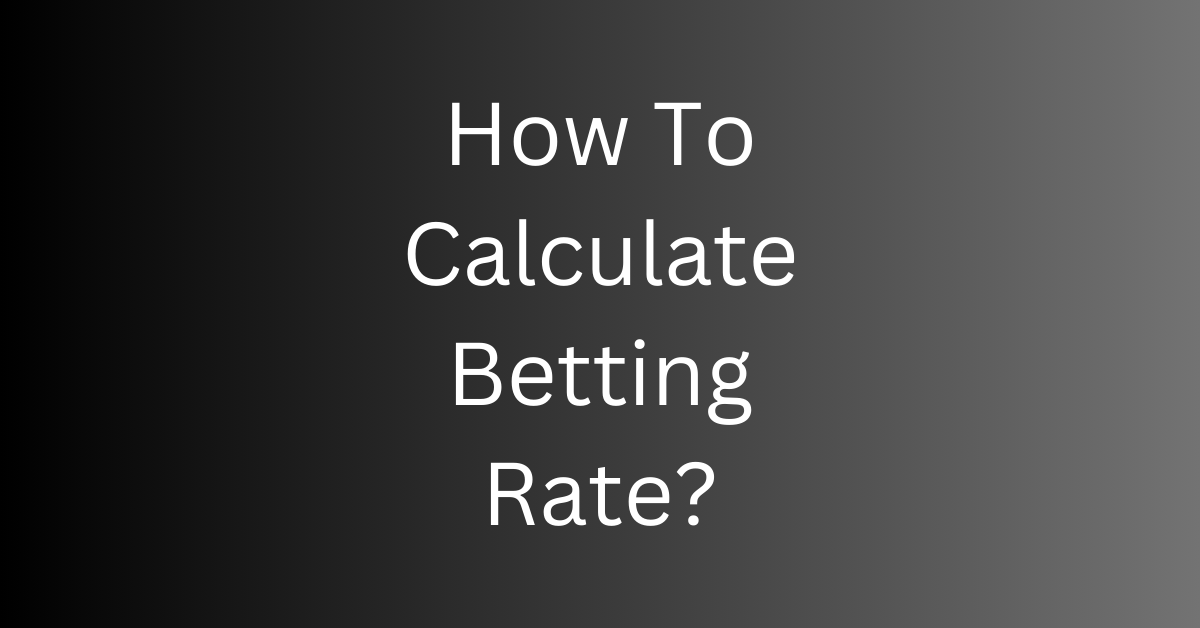Calculating Odds in Betting
When it comes to betting, calculating odds is an essential skill every bettor must possess. Odds represent the probability of a specific outcome occurring in a sports event or any other betting scenario. In simple terms, odds show how likely or unlikely it is for an event to happen.
Understanding how to calculate odds allows bettors to make informed decisions when placing their bets. Odds are typically displayed in three main formats: fractional, decimal, and moneyline. Each format has its own way of representing probability and potential winnings, so it’s crucial for bettors to be familiar with all three to choose the best option for their betting strategy.
Understanding Probability in Betting
Probability in betting refers to the likelihood of a particular event occurring in a given situation. It is a crucial concept that helps bettors make informed decisions when placing their bets. Understanding and calculating probabilities can give bettors an edge in predicting outcomes and increasing their chances of winning.
In betting, probabilities are often presented in the form of odds. Odds represent the ratio between the likelihood of an event happening and the likelihood of it not happening. The higher the probability of an event occurring, the lower the odds will be, and vice versa. By interpreting odds correctly, bettors can assess the risk and potential reward of a bet more effectively.
Factors Affecting Betting Rates
Betting rates are influenced by a myriad of factors, all of which play a crucial role in determining the odds offered by bookmakers. One of the key aspects that affects betting rates is the form and performance of the teams or individuals involved in a sporting event. Bookmakers take into account the recent performances, injuries, and overall strength of the competitors when setting the odds for a particular match or game.
Another factor that significantly impacts betting rates is the betting volume and action on a particular outcome. Bookmakers adjust the odds based on the amount of money wagered on each side to ensure a balanced book and mitigate their own risks. When there is a heavy influx of bets on one side, the odds for that outcome may shorten, while the odds for the other side may lengthen to attract more bets and limit potential losses for the bookmaker.
Different Types of Odds Formats
When it comes to betting, understanding the different types of odds formats is crucial. The three most common formats are fractional odds, decimal odds, and moneyline odds.
Fractional odds are displayed as a fraction, such as 2/1 or 5/2, and represent the potential profit you could make from a bet. Decimal odds are popular in Europe and are represented as a decimal number, like 3.00 or 1.50, indicating the total amount you could win, including your stake. Moneyline odds, commonly used in the United States, show either a positive or negative number, with positive odds indicating how much profit you could make on a $100 bet and negative odds representing how much you need to bet to win $100.
Calculating Payouts in Betting
When it comes to calculating payouts in betting, it is crucial for punters to have a clear understanding of how the process works. Payouts are determined based on the odds given for a particular outcome in an event. For instance, if the odds for a team winning a match are 2.00 and a punter places a $100 bet on that outcome, the potential payout would be $200 (including the original stake).
Additionally, punters can use a simple formula to calculate potential payouts. By multiplying the amount wagered by the odds given for a specific outcome, punters can determine the potential payout. This calculation enables bettors to make informed decisions when placing bets and helps them understand the potential returns on their investments in the betting market.















